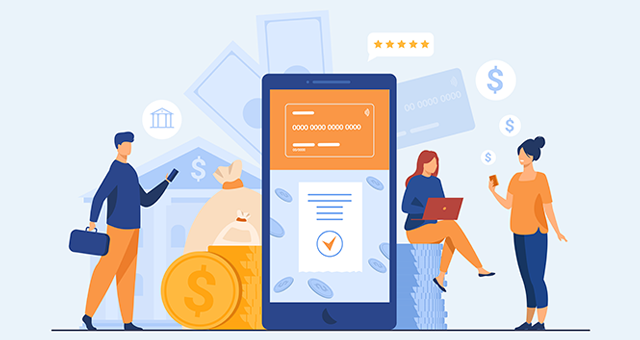
Empowering Teens to Use Peer-to-Peer Payment Apps Safely
In today’s digital environment, peer-to-peer (P2P) payment apps are increasingly popular, especially among teenagers. Apps like Venmo, Cash App, and PayPal make it easy to transfer money, split bills, and make purchases with just a few taps. Recent data indicates that 45% of American teenagers routinely use these apps, highlighting their convenience. But with ease of use comes potential risks. To fully enjoy the benefits of P2P apps while safeguarding their finances and personal information, teens must learn to navigate these platforms wisely.
Why Are P2P Payment Apps So Appealing to Teens?
P2P apps have become a favorite among teens due to their user-friendly interface and adaptability. A 2023 survey revealed that nearly 50% of U.S. teens rely on these apps for everyday transactions. Their primary draw? Speed and simplicity. Whether splitting a bill at a restaurant or quickly sending money to a friend, teens are captivated by the ability to make instant transactions with minimal hassle.
The Risks Teens Face with P2P Payment Apps
Though Peer-to-Peer payment apps are convenient, they are not without risks. Teens, in particular, are vulnerable to specific challenges when using these platforms. The following are some typical concerns to be aware of:
Security Issues
P2P networks typically contain robust encryption and anti-fraud mechanisms. However, if the phone is stolen or lost, the data will be easily accessible. A thief could easily access the app and initiate fraudulent transactions.
Fraud and Scams
Despite their popularity, Peer-to-Peer apps are susceptible to fraud. Teens may fall victim to phishing scams or fake money requests, unknowingly sending money to fraudsters. According to a recent survey, 9% of frequent P2P app users reported being scammed, and 12% admitted they sent money to the wrong person.
Overspending
The ease of transferring money can lead to overspending. Since transactions happen in real-time, it is easy for teens to lose track of how much they are spending.
Privacy Concerns:
Teens might unknowingly share sensitive personal information through P2P apps, making them vulnerable to privacy breaches or identity theft.
Tips for Teaching Teens Safe P2P App Usage
Helping teens understand how to use P2P payment apps safely is crucial in minimizing their risks. Parents and guardians can ensure teens use these platforms responsibly by instilling good habits and awareness. Given below are some practical tips to get you going.
1. Educate About Security Settings
Teach teens to enable critical security features on their P2P apps, such as two-factor authentication (2FA), biometric locks (e.g., fingerprint or face ID), and strong, unique passwords. Also, remind them to lock their phones with passcodes to prevent unauthorized access if their device is lost or stolen. Regularly updating passwords and reviewing app settings for security improvements should be a consistent practice.
2. Encourage Verification of Recipients
Before transferring funds, teens should always verify the receiver’s identity. Simple mistakes like entering the wrong phone number or username can send money to the wrong person. They should double-check usernames, phone numbers, and email addresses before they complete a transaction.
3. Warn against Sharing Sensitive Information
Explain the importance of never sharing sensitive personal information, such as bank account details or passwords, via P2P apps. Fraudsters could exploit this information to commit identity theft. Instruct them to adjust their privacy settings and be cautious about sharing personal details on these platforms.
4. Discuss the Importance of Avoiding Scams
Instruct teenagers to be cautious of unsolicited requests for money. Scammers often pose as friends, family, or even legitimate companies to trick users into sending payments. Encourage them to call or message the person directly if they receive a suspicious payment request, even if it appears to come from someone they know.
5. Set Spending Limits
It is easy to lose track of spending when you can send cash with just a few taps. Help teens set spending limits and review their transaction history regularly to stay on top of their finances. Consider linking the P2P app to a prepaid card or a secondary account with limited funds to prevent overspending.
6. Encourage Regular App Updates
Remind teens to keep their apps updated. Developers regularly update and address security flaws to enhance app performance. An outdated app can be an easy target for hackers or other security risks.
7. Monitor Transactions Together
With younger teens, you should consider reviewing their transactions periodically. It can be an opportunity to spot any red flags, discuss concerns, and reinforce safe usage habits. Over time, they will become more independent while practicing good financial behavior.
The Final Word
Navigating the world of peer-to-peer payment apps can be a smooth experience for teens if equipped with the correct information. As a parent, your role in guiding them through the safe use of these apps is vital. By setting clear boundaries, teaching about potential risks, and staying engaged with their financial activities, you can help your teen manage their money wisely and avoid common pitfalls. Empower them with the tools they need to use P2P apps responsibly, ensuring their digital financial journey is both secure and beneficial.


